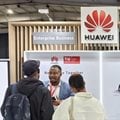





In all honesty, one could understand the arguments from both sides of the table: the broadcasters wanting a larger voting representation as they accounted for 78% of the research funding, was not an unreasonable ask. Forcing a vote at a Saarf board meeting where the other constituents were not given the opportunity to review the request was unreasonable.
The marketers insistence that the research was indirectly funded by them was also in part correct. Back in the 80s to early 90s, every media schedule had a levy line item – a percentage charged on media investment to fund research. In the 90s it was decided, by mutual agreement of all parties involved, that media rates would increase by 1% to fund the research going forward. One can therefore understand marketer’s argument that they indirectly fund the research, and some would argue they continue to do so.
There was no going back, the damage had been done and SA moved into uncharted waters with new research and new research bodies being created. The BRC (Broadcast Research Council) took over Rams and Tams; the PRC (Publishers Research Council) took responsibility for publisher researcher and the MRF (Marketers Research Foundation) was established to meet marketers research requirements. The BRC and PRC funded the Establishment Survey (ES) – the predominantly demographic and broad media consumption survey which informs Rams, Tams & Pams. The MRF has recently launched Maps (Marketing All Products Survey). While the ES, Rams, Tams & Pams remain free to the end user, Maps is subscription based and funded by marketers.
Then followed years of ups and downs, with most of the frustration being felt largely by the end users. Agencies were trying to make sense of the data across multiple sources, including gaps in the research resulting in frustration as well as questioning of the data.
Covid-19 hit and everyone took a financial hammering. 2020 saw the industry taking a step closer to the single source data of old with the launch of Fusion 2020. A collaboration between the PRC, BRC – Tams data, Nielsen CPS – FMCG data and Nielsen DCS – Digital Consumer Survey. There were however still gaps: no outdoor, no station level data for radio, no cinema, no intermedia and marketers and agencies needed more brand and lifestyle data.
The Covid-19 pandemic has resulted in the three research bodies funding being negatively impacted. The question arises as to whether it’s not time for all interested parties, including cinema, outdoor and potentially the IAB to sit around the table once again. There remains an important need for a base survey, an ES. The BRC, PRC & MRF all require an ES as the starting point to their surveys. Currently all three bodies are self-funding the ES with certain elements being paid separately for the same information. A case in point is that all three need to purchase geospatial maps however by collaborating to fund an ES, savings can be made which could fund the rest of their research requirements. The more players around the table the greater the saving and the more likely the entire industry would buy in. It would assist with the standardisation of basic demographics, a SocioEconomic Measure (SEM) agreed to by all and overarching media consumption questions.
Can it be done? In 2020, the organisations responsible for the official radio, print, TV and internet audience measurements in the Netherlands founded the MSS (Media Standard Survey). The survey is a source for census information on media. The website says under collaboration: “the collaboration between the official media audience measurement services in the Netherlands is a unique initiative.” Since 2013, the audience measurement services, their partners and the SCP have commissioned a Time Budget Study, which is used as a hub to fuse the different media audience currencies. Source: www.kijkonderzoek.nl South Africa was at the forefront of collaboration historically, and there is no reason why we cannot do this again.
Herein lies the key benefit for all stakeholders: the creation of an ES that is used as a hub to fuse the different media currency surveys. Imagine having a single fused survey that includes Tams, Rams, Pams, IAB, Road, Maps, CPS, DCS & Roots into one for free to the end user? What a wealth of data and a collaboration that would be.
The combination of all data sources might well be a step too far as the IAB, Road and MRF do have their own funding and financial models, however, creating an ES that is a collaboration between all interested parties and creating a fused media currency survey would be a win for all stakeholders as well as ensuring financial savings.
The good news is that there are already meetings scheduled amongst the key players about collaboration and the AMF is actively involved and represented. There are “new kids” on the block with the old guard having moved on. There exists the perfect opportunity to get around a table, leave self-interest and criticism of the past and current surveys outside the door and start a collaboration conversation. Let’s work together to get back to single source data that’s a result of collaboration, mutual respect and an understanding that at the end of the day, all players require data that is supported by the industry in order to ensure that there is a media currency which keeps the industry thriving and brands growing to ensure investment growth.
The Advertising Media Forum (AMF) is a collective of media agencies and individuals including media strategists, planners, buyers and consultants through whom 95% of all media expenditure in South Africa is bought. The AMF advises and represents relevant organisations and aims to create open channels of communication and encourage and support transparent policies, strategies and transactions within the industry. For more information on the AMF, visit amf.org,za.
